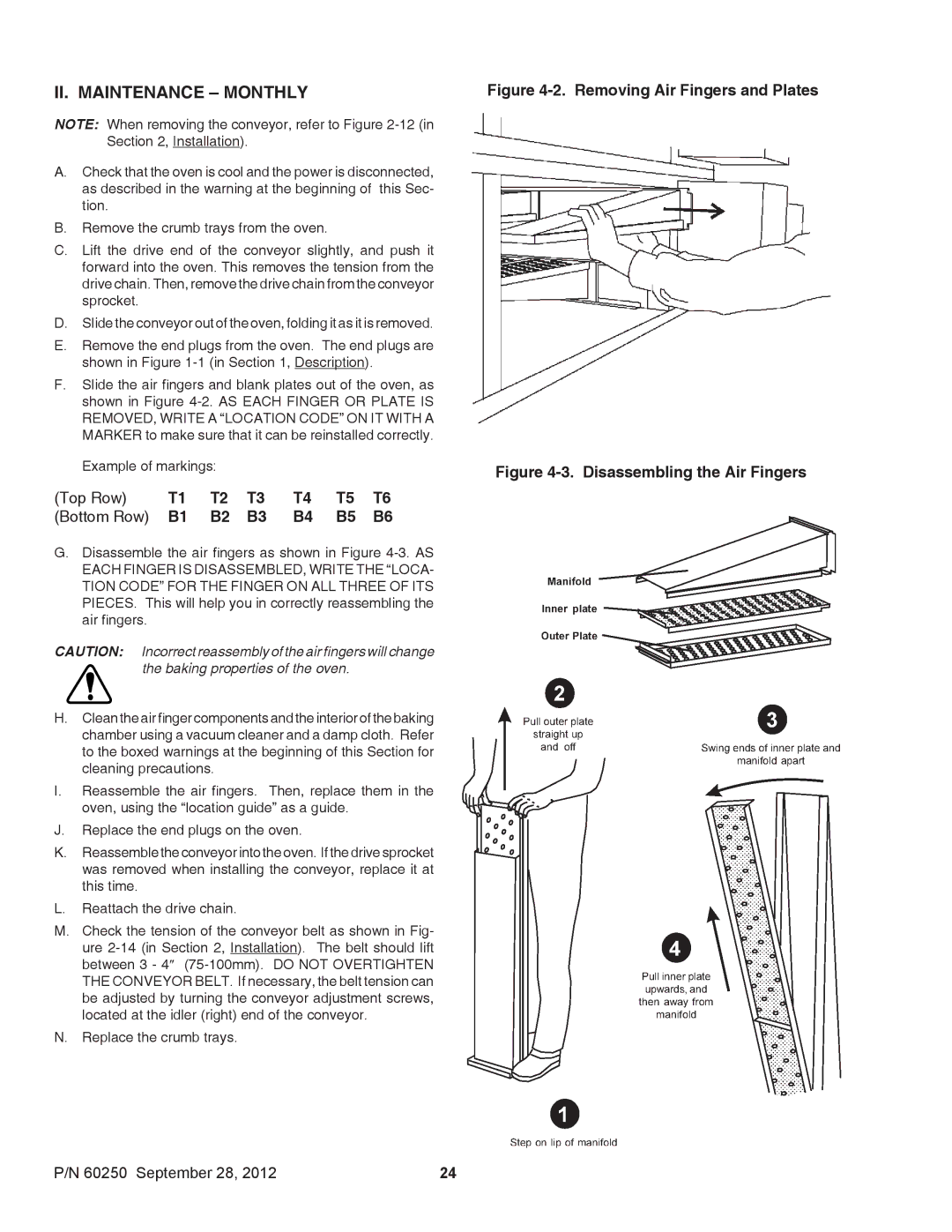P/N 60250 specifications
The Middleby Marshall P/N 60250 represents a significant advancement in commercial cooking technology, specifically designed to meet the rigorous demands of the foodservice industry. This piece of equipment stands out due to its combination of speed, efficiency, and superior cooking performance, making it an invaluable asset for restaurants, pizzerias, and other food establishments.One of the main features of the P/N 60250 is its high-speed cooking capability. Utilizing the patented "TurboChef" technology, this oven can cook food items much faster than traditional convection ovens, which significantly reduces wait times and improves service efficiency. The unique airflow design ensures that food is cooked evenly, resulting in high-quality products that meet the expectations of discerning customers.
The P/N 60250 also boasts an array of customizable cooking modes that enable chefs to adapt the oven to a variety of menu items. With settings for baking, broiling, and convection cooking, operators can utilize this versatile unit for diverse applications, from crispy pizzas to perfectly baked pastries. This flexibility allows establishments to expand their menu offerings while maintaining consistent food quality.
Another key characteristic of the Middleby Marshall P/N 60250 is its energy efficiency. This unit is engineered to consume less energy compared to standard ovens, which not only benefits the environment but also helps reduce operational costs for foodservice operators. The intelligent energy management systems integrated into the oven optimize performance while minimizing energy waste.
The ease of use is another hallmark of the P/N 60250. With a user-friendly interface and programmable controls, staff can quickly learn how to operate the oven, reducing the training time required. The intuitive design allows for seamless transitions between different cooking modes and settings, enhancing workflow in fast-paced kitchen environments.
Furthermore, the construction of the Middleby Marshall P/N 60250 is robust and durable, designed to withstand the rigors of a commercial kitchen. The stainless steel exterior not only provides an attractive finish but also ensures easy cleaning and maintenance, a crucial feature for busy establishments.
In summary, the Middleby Marshall P/N 60250 exemplifies the blend of advanced technology and practical features necessary in modern foodservice operations. Its high-speed cooking capabilities, customizable settings, energy efficiency, ease of use, and durable construction make it an essential tool for any kitchen looking to elevate their culinary offerings while maximizing productivity.

